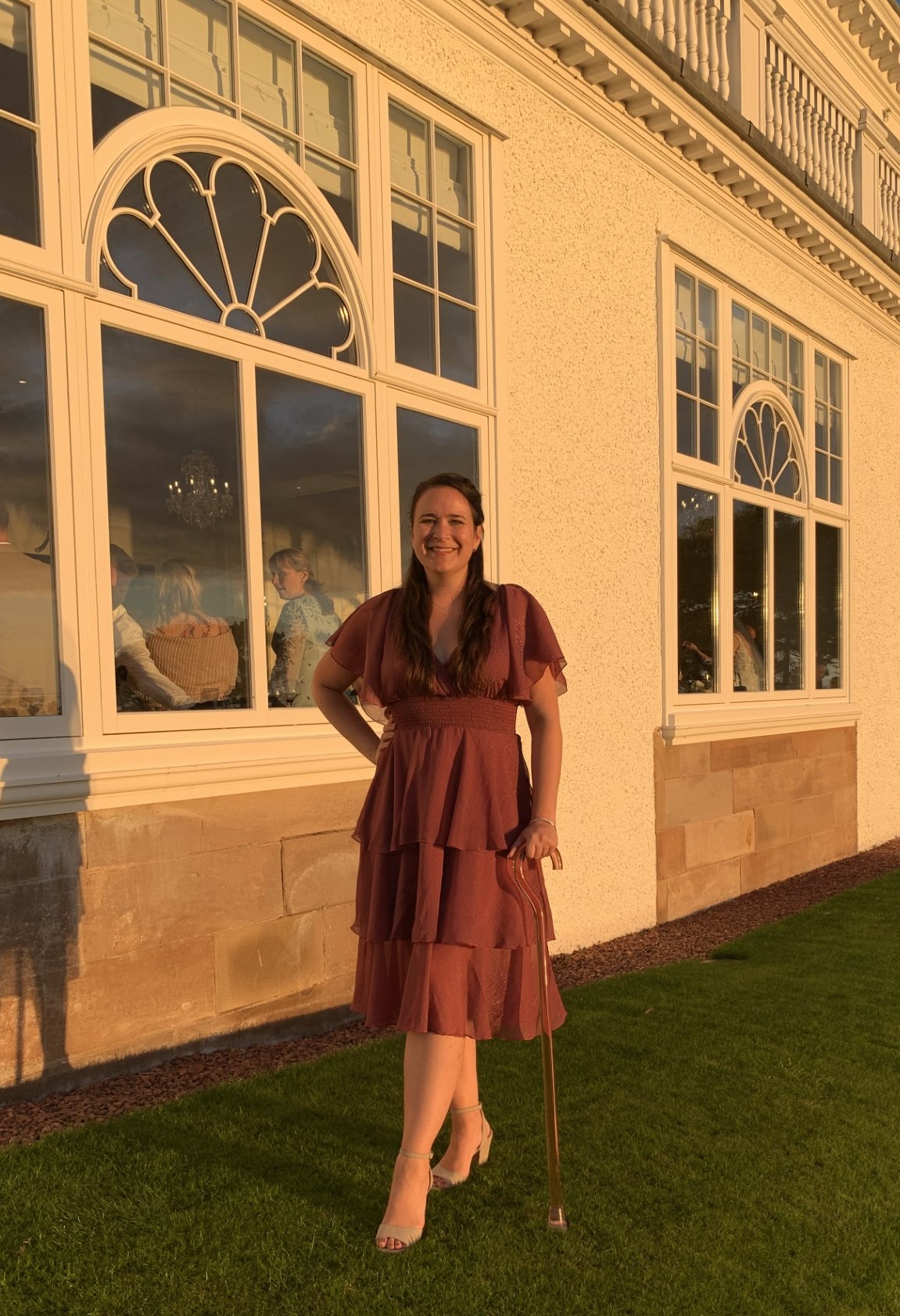When the invisible becomes visible
This Disability Pride Month, we’re resharing Zoë’s blog on her experiences of using mobility aids for her axial SpA.
 I’ve had axial SpA for about 11 years now, but I’ve only had the correct diagnosis for about four of those.
I’ve had axial SpA for about 11 years now, but I’ve only had the correct diagnosis for about four of those.
As with any long-term condition, it takes time to emotionally process your diagnosis and understand how it will impact your life. I often liken it to the stages of grief – first there’s denial, maybe you feel angry or down, then gradually you come to the point of acceptance and eventually hope. The tricky thing with axial SpA, is that the condition can change over time (even day by day or hour by hour!), so it can often feel like you have to repeat that process of acceptance as new symptoms crop up, you experience a bad flare, or you have to miss a particular life event that you were really looking forward to. It’s natural for that original frustration and fear to return, before gradually processing the emotions again.
Something else that’s taken me time to process, is using mobility aids and joint supports.
First, I’ve had to deal with my own internalised ableism and probably a touch of denial.
Am I sick or ‘disabled enough’ to use these things?
At what point should I use them and when should I push through the pain or fatigue?
Am I giving in to my axial SpA by using these devices?
The ‘lightbulb moment’ for me was when a friend described using an aid as just the same as anyone using a dishwasher. We use a dishwasher to save us time and energy, so why not use an aid to save us pain and fatigue? It sounded so simple, yet it really triggered a shift in my mindset.
I’m not working against my axial SpA. I’m living with it.
I now use a walking stick when I’m out and about most days. I bought one that is lightweight and folds up, so that I could keep it in my bag and only use it when the pain got too bad. Since trying it out I found that using the stick meant that I could do a lot more within my pain and energy limits. It seems obvious, but to me it was a revelation!

Before using a stick, my axial SpA was generally an ‘invisible disability’. Most people couldn’t tell I had it from glancing at me, unless they noticed how frequently I change position when sitting, how much I need to sit rather than stand, and the occasional wince on my face if I was in pain. To the stranger on the street, I was a regular twenty-something. With my stick, I find it easier to find a seat on public transport or get support when queuing at the airport checks.
I’m really interested in the social model of disability, which emphasises that people are disabled by the barriers in society. For example, a gig where I have to stand for hours would be inaccessible to me, but having seating available removes that barrier. Using my mobility aid is freeing and reduces the challenges that I face, allowing me to do more of the things I need or want to do.
I bought a stick which folds out into a seat so I can enjoy visiting galleries and museums more. I’m acutely aware of how little seating most museums and galleries provide, so being able to fold out my own seat as and when I need it allows me to visit these places and experience less pain during or afterwards.
Now, unfortunately, it’s not a guarantee and it’s not all positive. There will always be things that I can’t do because of my axial SpA, but I will continually strive to accept this, even as it changes over the years. I can’t say it will be easy, but it’s all I can do.
I do still have times, despite my stubbornness, where I have to ask for assistance, but the more I do it, the easier it’s becoming.

I have experienced negative comments and rude stares, I presume because people are trying to work out why I need a stick.
I have had some awkward conversations where well-meaning strangers have looked worried and asked what’s wrong – assuming I sprained an ankle or have a temporary injury. The first time this happened, I was taken aback and eventually mumbled something about “oh, er, I have a chronic illness…” and it was all a bit weird. Nowadays I have some fun replies ready, like “injured myself while lion taming”, “I’m an ex-pro crocodile wrestler” or the simple but intriguing, “it’s classified”.
In all seriousness, though, I feel that the more I talk about my axial SpA, my mobility aids and disability in general, the more I will encourage people to be understanding and empathetic to other people. The more I talk about it, the less self-conscious I feel. I have met lots of disabled people through my social media posts about my experiences and I feel less alone.
If you would like to share your experiences, I’d love to hear from you. You can email zoe@nass.co.uk and we can have a chat!